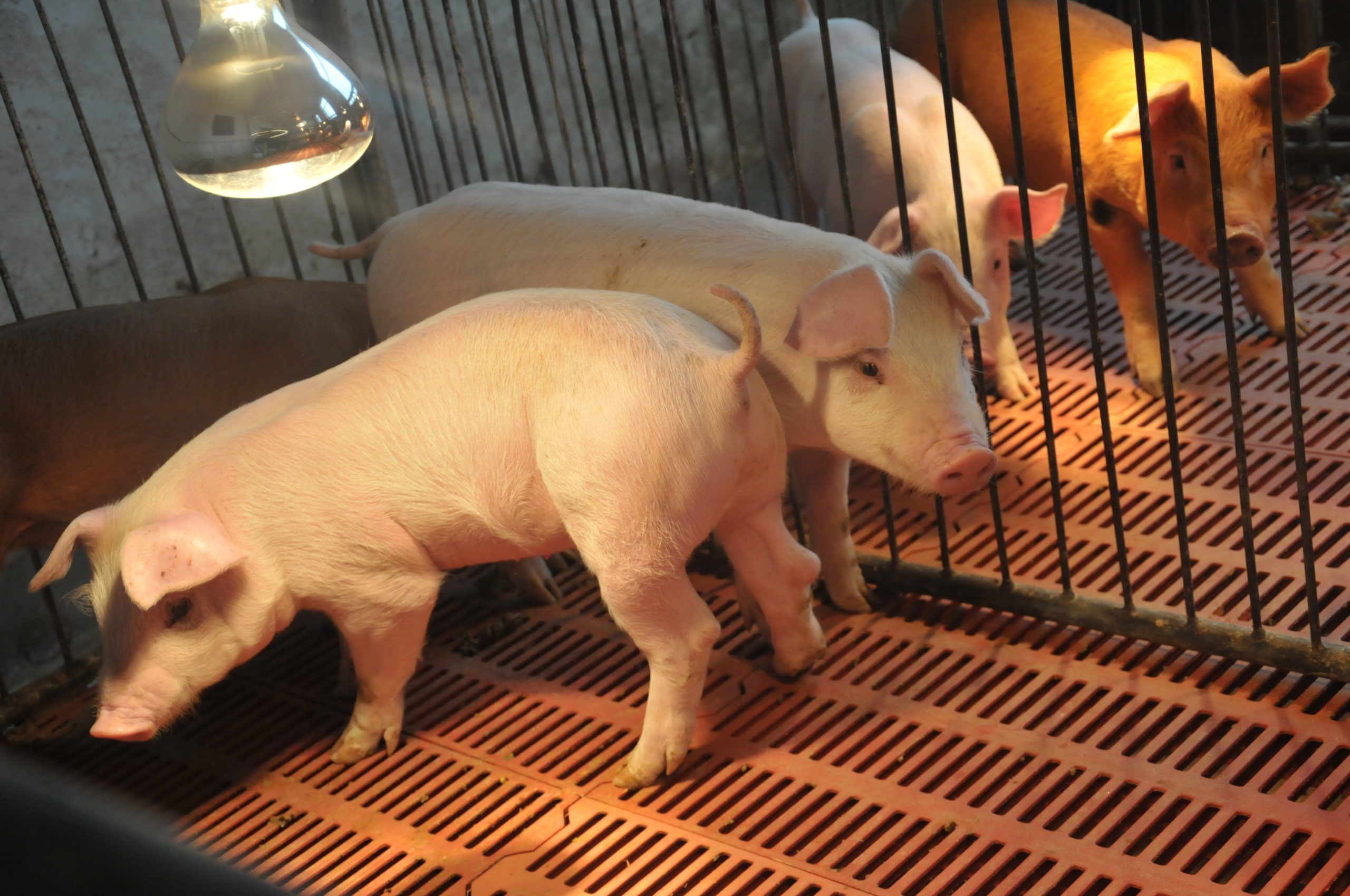Alternative protein resources in China

Improving the utilisation rate of protein in feed is an important prerequisite for the sustainable development of the pig industry in China. In doing so, it can also slow down the environmental pollution caused by intensive pig farming.
There are two main bottlenecks restricting the sustainable development of the swine sector in China; the shortage of protein resources and the low utilisation level of nitrogen. The lack of protein-rich feed is a noticeable factor limiting the development of China’s pig industry. For instance, in 2017, China imported 95 million tonnes of soybeans and 1.5 million tonnes of fishmeal. From this, 70% of the imported soybeans and 100% of the fishmeal were used as feedstuffs. Therefore, it is of great importance to develop and expand on new protein resources and methods for efficient utilisation of protein in animal diets.
The nitrogen utilisation rate in Chinese pig production is 37.5%-63.8% in the 20-40 kg weight stage and 25.9%-47.5% at the 60 kg weight to slaughter stage. Six hundred million pigs are slaughtered every year throughout the country, which means 1.1 million tonnes of nitrogen pollutants.
Utilising non-grain protein feed
In terms of alternative protein resources, non-grain feed protein resources in China are very rich. The improvement of protein utilisation efficiency from these non-grain feed protein resources is one of the main measures which can be taken to alleviate the shortage and make the industry more sustainable.
Vegetable protein
A combination of soybean meal and a small amount of animal protein feed can supplement the protein needs in pig diets. In this case, soybean meal should account for 10-20% of the overall diet. Peanut meal can be combined with soybean meal. However, this has a high fat content and is not easy to store. It also produces aflatoxins fairly easily, which limits its use in pig feed. Due to the existence of free gossypol in cottonseed meal, it can cause accumulative poisoning in pigs, and the crude fibre content is high. Therefore, the use of cottonseed meal in pig feed should be limited to no more than 5% of the total pig diet. Due to the presence of glucosinolates, rapeseed meal should be detoxified before feeding. It should not exceed 5-7% of the diet, and it’s not suitable for sows in late pregnancy and lactating sows.
Distillers Dried Grains with Soluble (DDGS) has become a new protein-rich feed material widely used by feed manufacturers in China and beyond. DDGS is commonly used in livestock and aquatic feed to replace soybean meal and fishmeal, with a maximum proportion of 30%.
Animal protein
Raw materials for animal protein are derived from waste produced during the slaughter of animals. The rational and effective reuse of these wastes not only reduces environmental pollution, but also opens up a new source of feedstuffs. The nutritional function of fishmeal in feed is mainly to increase the balance and efficiency of amino acids. Plasma protein powder is widely used in feed formulation. However, plasma protein powder is expensive, and if the blood protein powder is not thoroughly inactivated, diseases could even be spread.
Yeast protein
GroPro, produced by Angel Yeast, uses pure yeast culture as a raw material. This can be produced on a large scale and the quality is controlled. It can destruct the cell wall that blocks the release of nutrients from yeast cells by a special enzymatic hydrolysis process. Macromolecular proteins are degraded into small peptides and free amino acids. The functional substances such as nucleotides are released. Then GroPro can provide rational amino acid composition and digestible protein. At the same time, it also has the special function of improving the palatability of feed and the animals’ intestinal health, enhancing animal immunity and alleviating diarrhoea in young animals. So far, GroPro is widely used to replace animal protein that has safety risks, such as spray-dried plasma protein (SDPP).
Unconventional protein
There are many sorts of unconventional protein resources, such as insect powder, snail powder, earthworm powder, etc. Housefly larva powder has also been used as an alternative to fishmeal. In addition, there are also some leguminous forage grasses with high protein content, which not only provide protein but also play a role as a green fodder. This can be particularly important for sows. However, the resources of unconventional protein are limited, the scale is small, and the standards are difficult to be unified.
Improving protein utilisation
How to effectively utilise available protein resources and improve protein utilisation efficiency has always been a hot and difficult issue for scholars from all over the world. Observing the crude protein index of different protein sources alone is not enough to objectively reflect on the nutritional value of dietary protein or use it efficiently.
The ideal protein concept is to prepare low protein diets by adding monomeric amino acids in the diet. In this way, the accurate determination of amino acid content, utilisation efficiency and the need for amino acids in the animal feed, and the supplementation of various amino acid resources, can achieve the ideal protein balance.
Studies have shown, that when synthetic amino acids were added to low protein amino acid diets in finisher pigs, the urine nitrogen/faecal nitrogen levels decreased with the decrease of dietary protein level (P<0.0001). at the same time, the apparent biological value of nitrogen increased with the decrease of dietary protein (p><0.001), and performance and environmental benefits could be achieved.>
Regulating nitrogen emissions
Adding a proper amount of galactose oligosaccharides to pig feed can increase the absorption of the intestinal tissue by reducing the oxidation of amino acids and glucose in the small intestinal mucosa of the growing pig.
Additionally, a large number of studies have proven that yeast mannan oligosaccharides have the effect of improving the intestinal tissue structure, and also provide nutrients which are beneficial microbes in the hind-gut, and maintain the balance of intestinal flora. The yeast manna oligosaccharide can improve the intestinal microflora and increase the height of the villi. To a certain extent, it can improve the digestion and absorption of protein, thus the amount of the undigested nitrogen content in the feed can be adjusted.
The role of NSP degrading enzymes is mainly to reduce the negative effect of soluble NSP on the small intestine nutrients of growing pigs and increase the utilisation rate of amino acids. To conclude, the rational development of non-grain protein resources and the use of new functional yeast proteins such as GroPro can effectively alleviate the shortage of feed protein resources in China and lead to a more sustainable pig production in the country.
| Authors: Xiao Xiangqian, Product Manager, Zhang Xin, Sales Manager and Chris Chen, Technical Manager, Angel Yeast, China |











